Four main minor scales are popular among composers/songwriters. These four are:
- Aeolian Scale
- Natural Minor Scale
- Harmonic Minor Scale
- Melodic Minor Scale
This article will discuss all minor scales and how they relate to one another and are different.
You’ll know how to use the Minor Scales to connect with your audience by the end of this lesson.
Let’s get started!
The topic of Music Theory is vast and complicated. It doesn’t have to be complicated and I’ve created a resource that goes through everything you need to know to be a competent musician, songwriter, and producer. I would highly recommend checking out that article as a primer to the rest of this article and other theory posts I have on this site. It’s titled “The Ultimate Guide on Music Theory for Musicians Who Dislike Theory.“
Aeolian Scale vs. Aeolian Mode
Suppose you have some familiarity with music theory. In that case, you might wonder what the distinction is between the Aeolian Mode and the Aeolian Scale.
The answer is: “nothing.”
It’s technically inaccurate to call a mode a scale. Still, I’ve found people find it easier to comprehend the idea of modes as a type of scale. We will discuss the relationship of the Aeolian Mode to the minor scales in a moment.
For more in-depth information on Modes of the Major Scale, please refer to my article “How Music Modes Enhance the Feelings in Your Song.“
Is the Aeolian Scale a Minor Scale?
Yes. Because Aeolian’s third note is a minor third, it is a minor mode (or minor scale).
What is the Aeolian Mode?
The Aeolian Mode (or Aeolian Scale) is the sixth mode of the major scale. Its sound can be characterized as sad, haunting, and moody.
It’s the second most used mode in popular music behind the Ionian mode (the major scale).
The Aeolian mode is also popular in film music and is heard throughout many types of film genres.
What Major Scale Degree Does Aeolian Start On?
Aeolian begins on the sixth scale degree of the Major Scale.
For example, if you are playing the C Major Scale, you would count up six notes to A. If you made A the tonic note, you would be in A Aeolian.
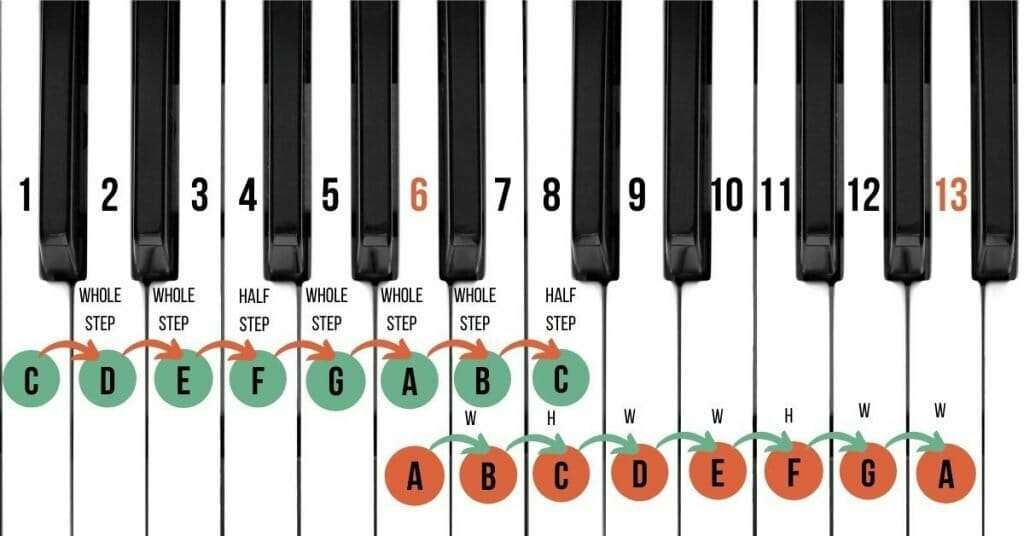
What Are the Minor Scale Intervals?
What gives a mode and the minor scale variations their distinct sonic flavor is the differing interval pattern. For example, here are all the minor scale intervals in comparison to the Major Scale.
| Interval | C Major Scale Notes | Interval | Aeolian Mode | Interval | Natural Minor Scale | Interval | Harmonic Minor Scale | Interval | Melodic Minor Scale |
| C | A | A | A | A | |||||
| Whole Step | D | Whole Step | B | Whole Step | B | Whole Step | B | Whole Step | B |
| Whole Step | E | Half Step | C | Half Step | C | Half Step | C | Half Step | C |
| Half Step | F | Whole Step | D | Whole Step | D | Whole Step | D | Whole Step | D |
| Whole Step | G | Whole Step | E | Whole Step | E | Whole Step | E | Whole Step | E |
| Whole Step | A | Half Step | F | Half Step | F | Half Step | F | Whole Step | F# |
| Whole step | B | Whole Step | G | Whole Step | G | Minor Third | G# | Whole Step | G# |
| Half Step | C | Whole Step | A | Whole Step | A | Half Step | A | Half Step | A |
Aeolian Scale vs. The Natural Minor Scale
The Aeolian scale is the same thing as the Natural Minor Scale. When people discuss the minor scale, they frequently mean the Natural Minor Scale or the Aeolian Mode.
A Natural Minor Scale is derived from its related Major Scale and will share the same notes. Thus, the Natural Minor Scale is also known as the Relative Minor Scale.
For example, the Relative Minor of C Major would be A Minor.
The Natural Minor is the “default minor scale”; however, it is less harmonically stable than other minor scales.
The Aeolian Scale vs. The Harmonic Minor Scale
The Aeolian scale is slightly different than the Harmonic Minor Scale. However, harmonic Minor Scales share the same notes as Aeolian (Natural Minor Scale), except a raised seventh degree.
This gives the Harmonic Minor Scale a more middle-eastern vibe to melodies. This melodic sound is prevalent in Flamenco Music and pairs well with the Phrygian Mode.
The Harmonic Minor Scale is better for harmonically resolved chord progressions (it’s called harmonic for a reason). Because the raised seventh modifies the minor five chord of the Natural Harmonic Scale to a dominant seventh chord, the result is a perfect cadence, as you would find in the major scale.
So if you are looking to create a more committed and satisfying harmony in your song, it would be good to try the Harmonic Minor instead of the Aeolian.
The Aeolian Scale vs. The Melodic Minor Scale
The Aeolian scale is different than the Melodic Minor Scale. Melodic Minor Scales take the Harmonic Minor scale one step further by raising the sixth and seventh scale degrees.
However, the Melodic Minor Scale is only played when ascending the melody. When descending the melody, you would play the notes in the Natural Minor Scale (Aeolian Mode).
The Melodic Minor Scale was developed to fix the large interval gap in the Harmonic Minor’s raised seventh. The raised sixth gives it a smoother melody in comparison to the harmonic minor. However, the chords created with the Melodic Minor are more clunky (We have examples later in the post).
The Melodic Minor Scale is rare for modern popular songwriting and is generally found in jazz music. Some may even call this a jazz scale.
The Melodic Minor is also simply a Major Scale, but with a minor third.
Can You Alternate Between Different Minor Scales in Your Songwriting?
Yes. Many songs often alternate between different minor scales. Sometimes these changes happen in the same melodic phrases. This is what makes the minor scale unique and flexible.
How to Play the Aeolian Mode
Now that we understand the differences between the minor scales and the basic music theory behind them let’s look at how we can implement them into our songwriting.
Starting with Chord Progressions
I find it’s easiest to start with chords when getting a feel for the difference in minor scales and modes. Then, hearing how the notes stack harmonically is a great way to understand the sonic characteristics and impact on your music.
What Are the Chords of Aeolian Mode?
The chords of the Aeolian Mode (Natural Minor Mode) are less stable than the Harmonic Minor. The Minor Five Chord doesn’t resolve into the Tonic Chord as satisfying like a Major Five to the Tonic. Play around and listen to how the chords create tension and release.
| Chord Numeral | Chord Type (Triad) |
| i | Minor |
| iiº | Diminished |
| III | Major |
| iv | Minor |
| v | Minor |
| VI | Major |
| VII | Major |
What Are the Chords of the Harmonic Minor Scale?
The chords of the Harmonic Minor are the most stable and resolute of the minor scales. Play around with the Four, Five, and Tonic Chord to hear the tension and release.
| Chord Numeral | Chord Type (Triad) |
| i | Minor |
| iiº | Diminished |
| III+ | Augmented |
| iv | Minor |
| v | Minor |
| VI | Major |
| viiº | Diminished |
What Are the Chords of the Melodic Minor Scale?
The Melodic Minor Chords are the most clunky of the three scales.
| Chord Numeral | Chord Type (Triad) |
| i | Minor |
| ii | Minor |
| III+ | Augmented |
| IV | Major |
| V | Major |
| viº | Diminished |
| viiº | Diminished |
How to Play the Aeolian Mode on Guitar
Here’s a quick guitar lesson for you to implement the Aeolian Mode (Natural Minor Scale) into your repertoire. The following are all in G Minor.
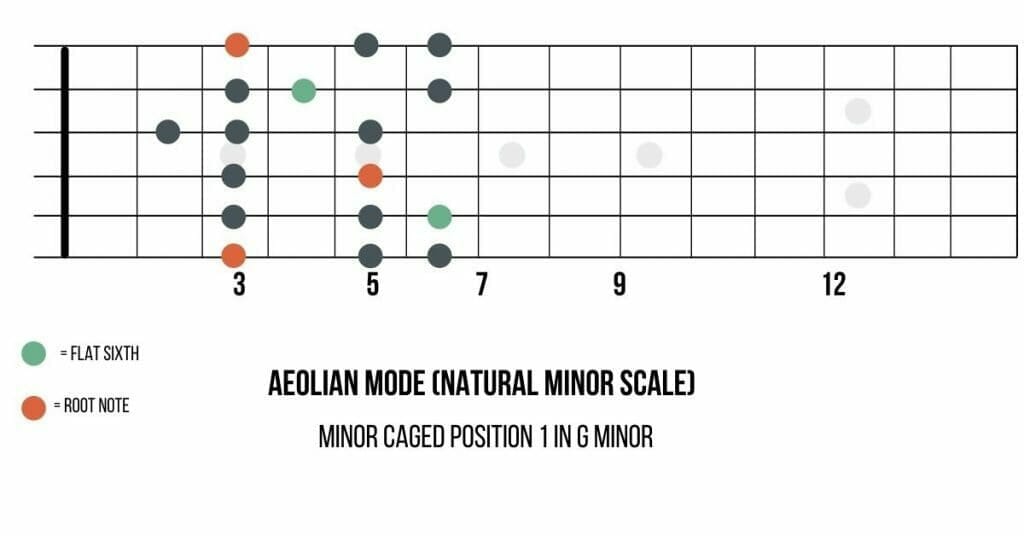
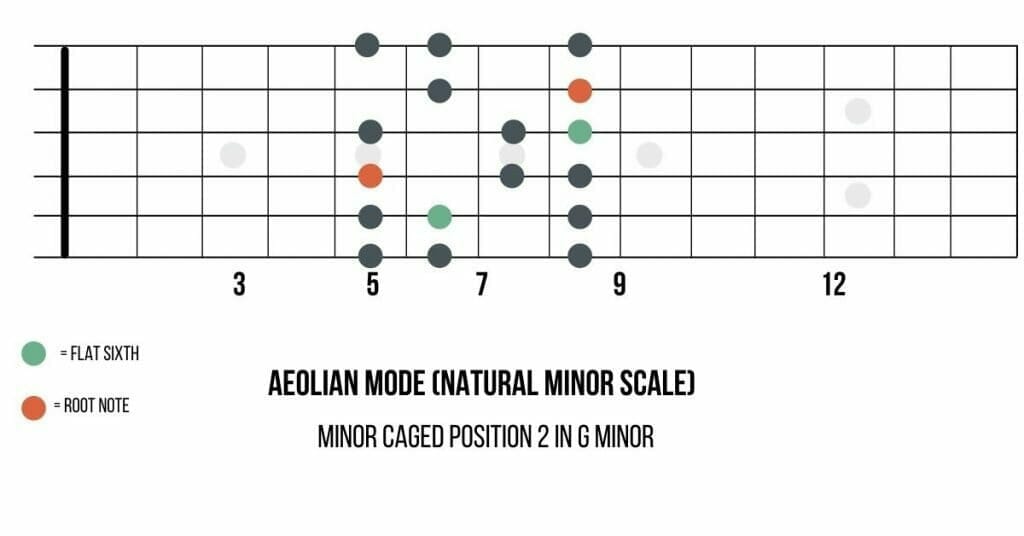
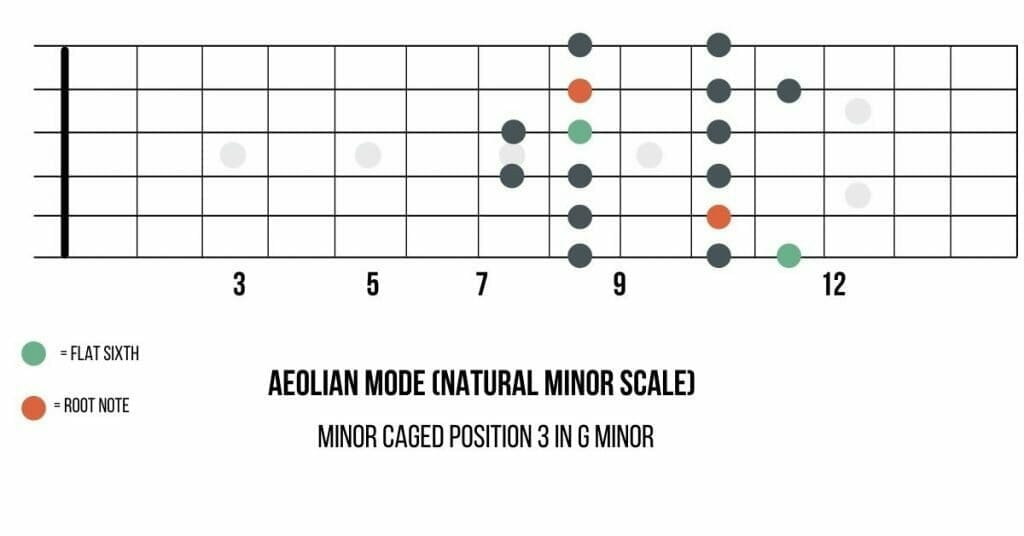
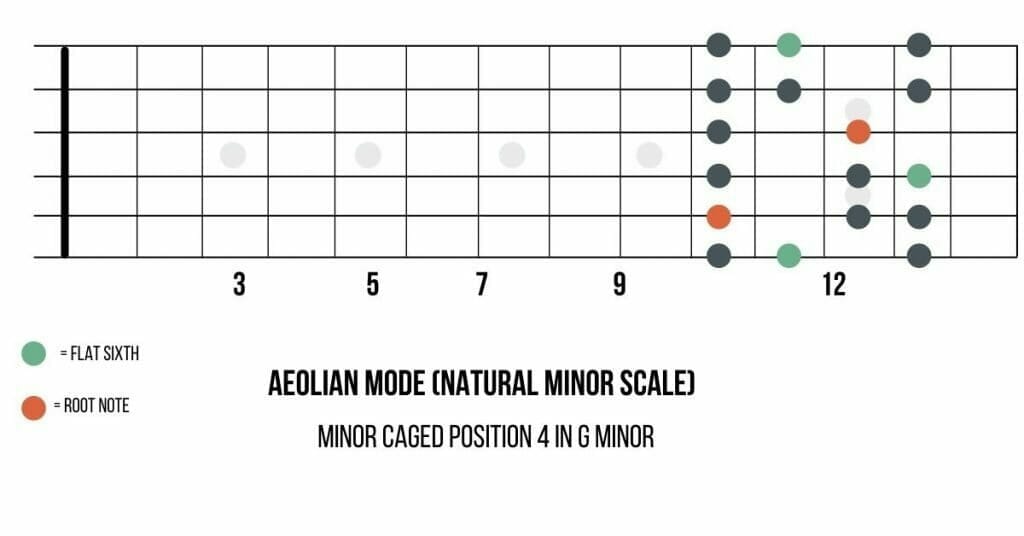
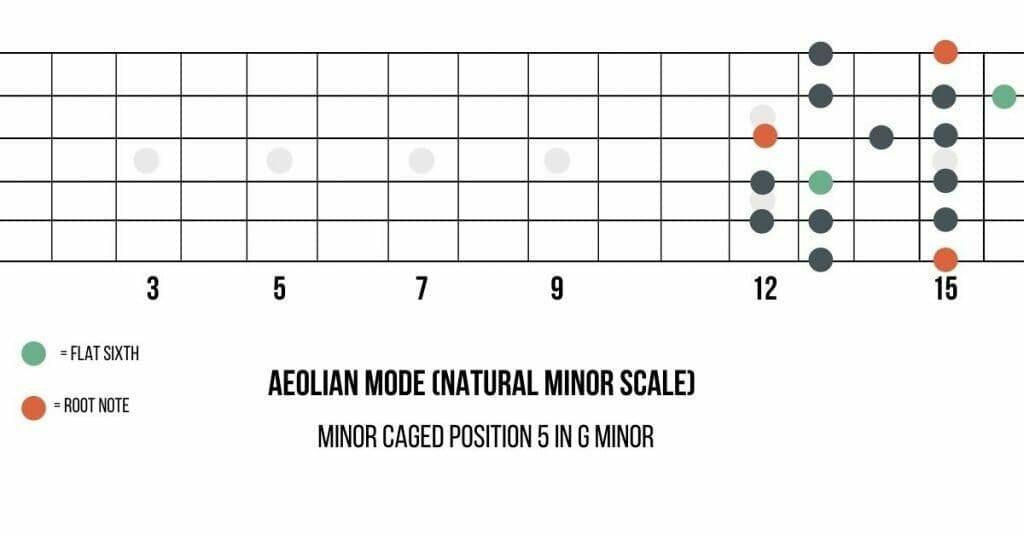
How to Play the Harmonic Minor Scale on Guitar
Here’s a quick guitar chart for you to implement the Harmonic Minor Scale into your repertoire. The following are all in G Minor.
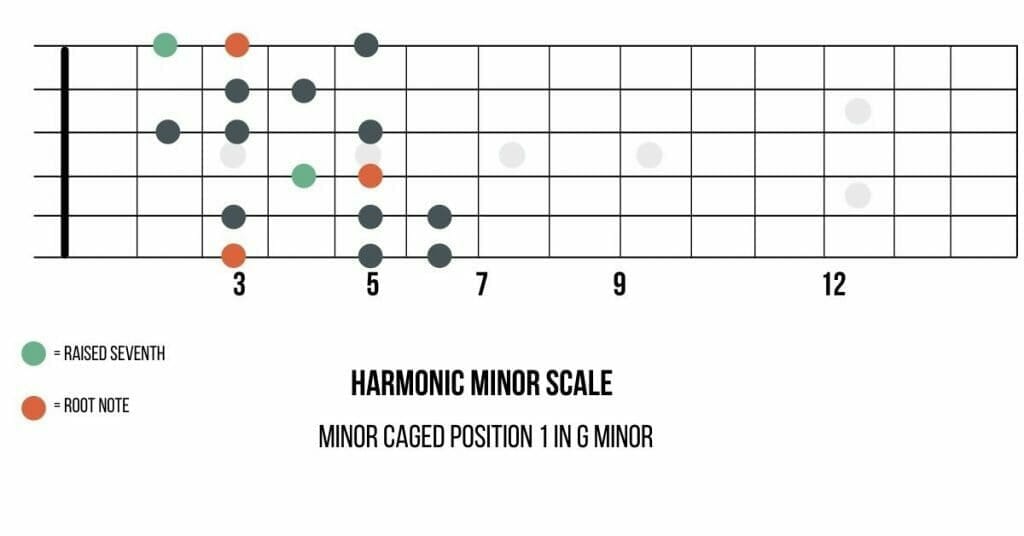
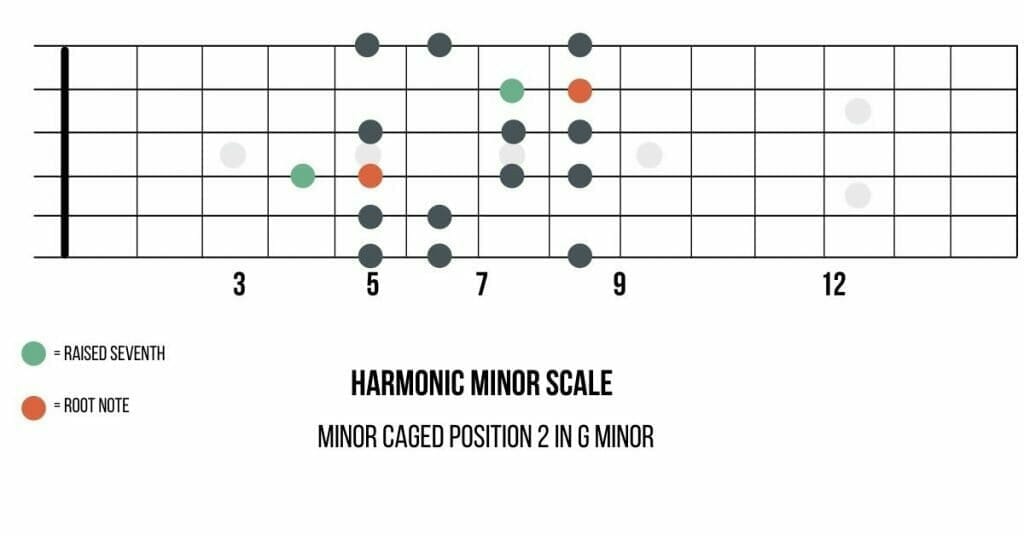
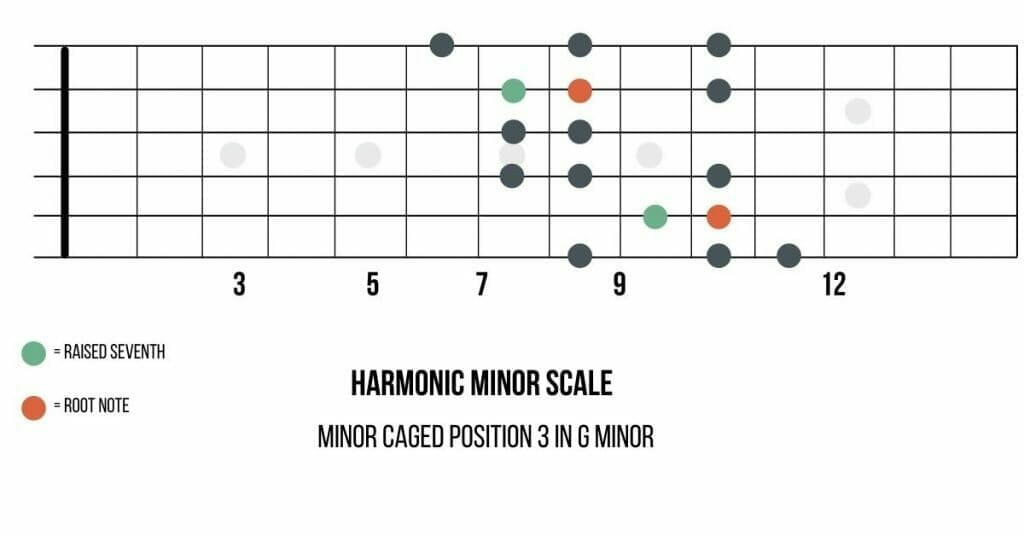
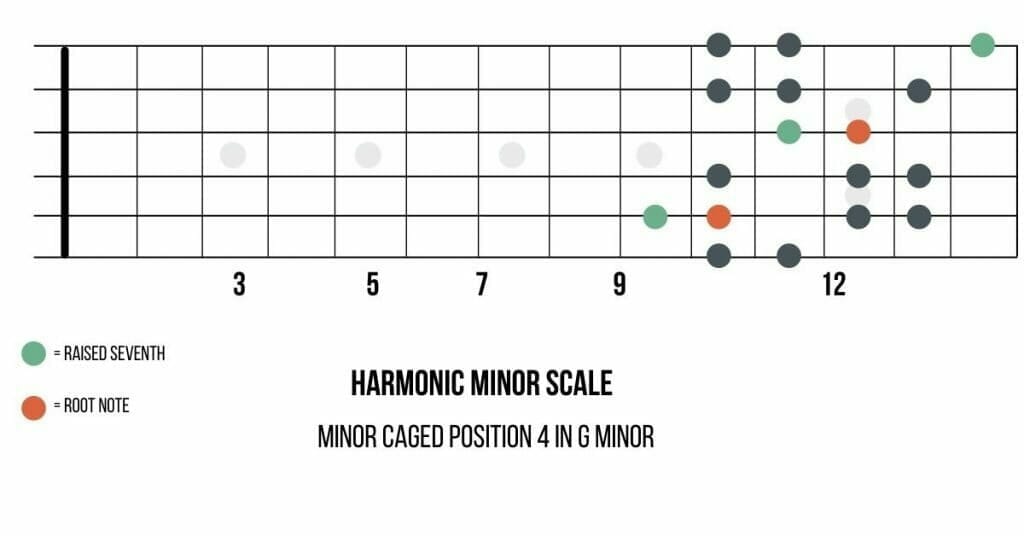
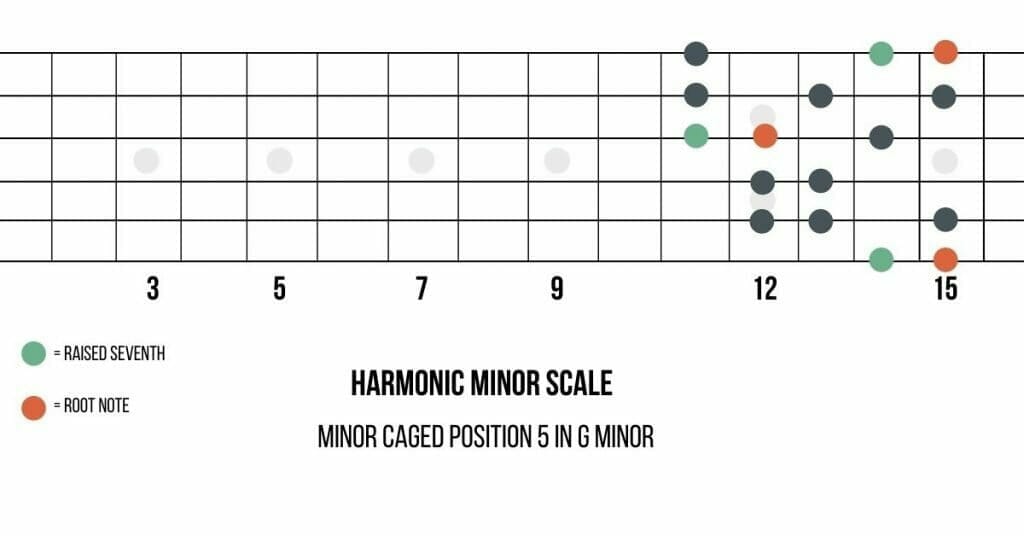
How to Play the Melodic Minor Scale on Guitar
Here’s a quick guitar chart for you to implement the Melodic Minor Scale into your repertoire. The following are all in G Minor.
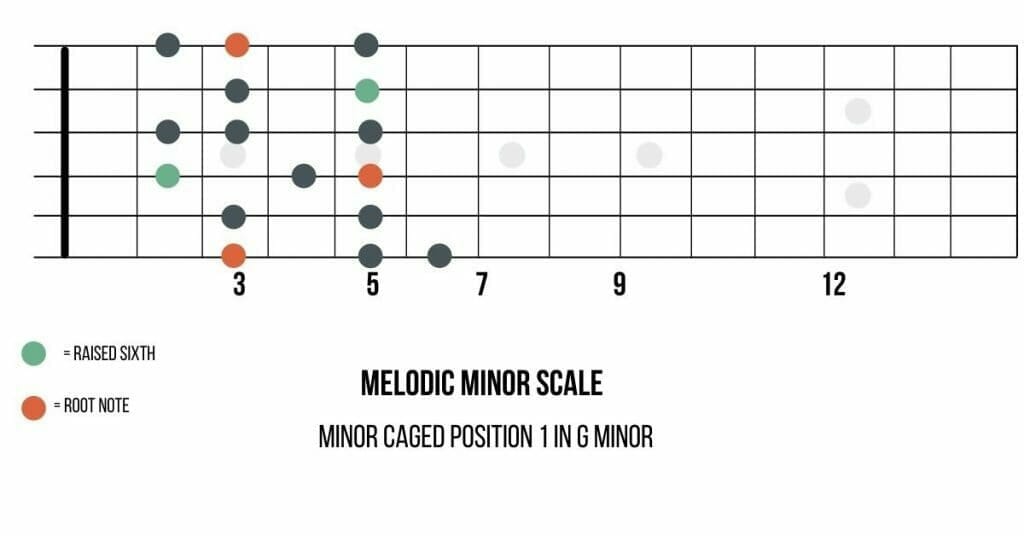
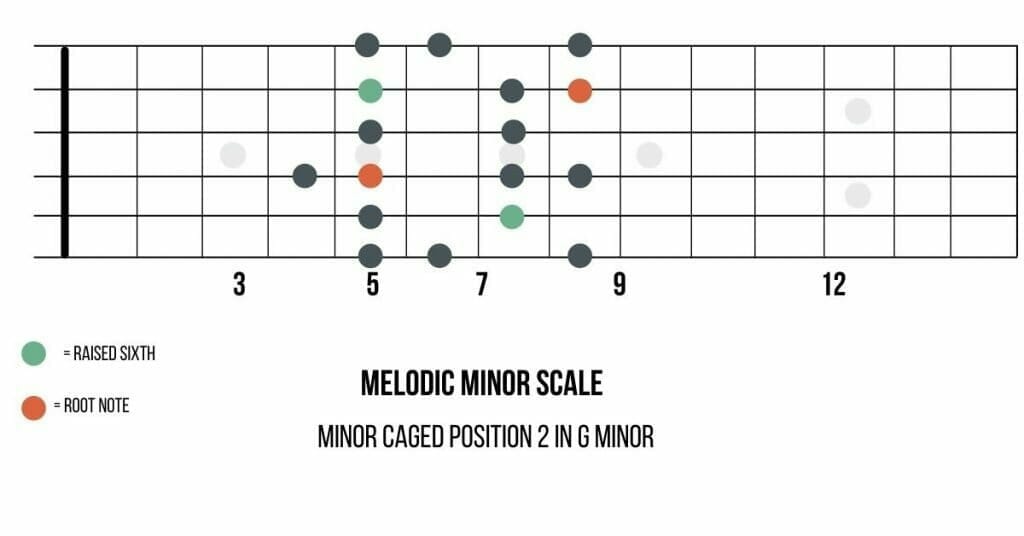
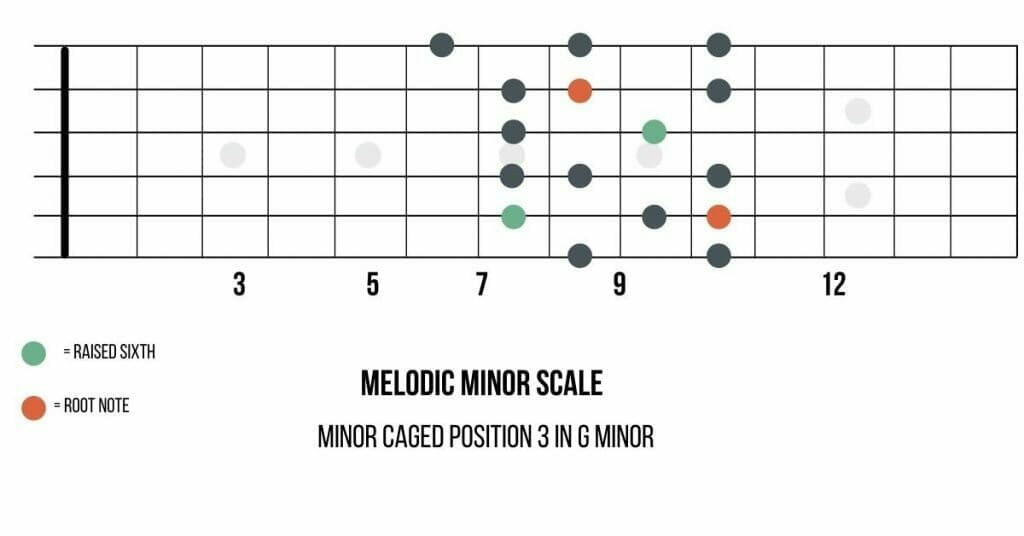
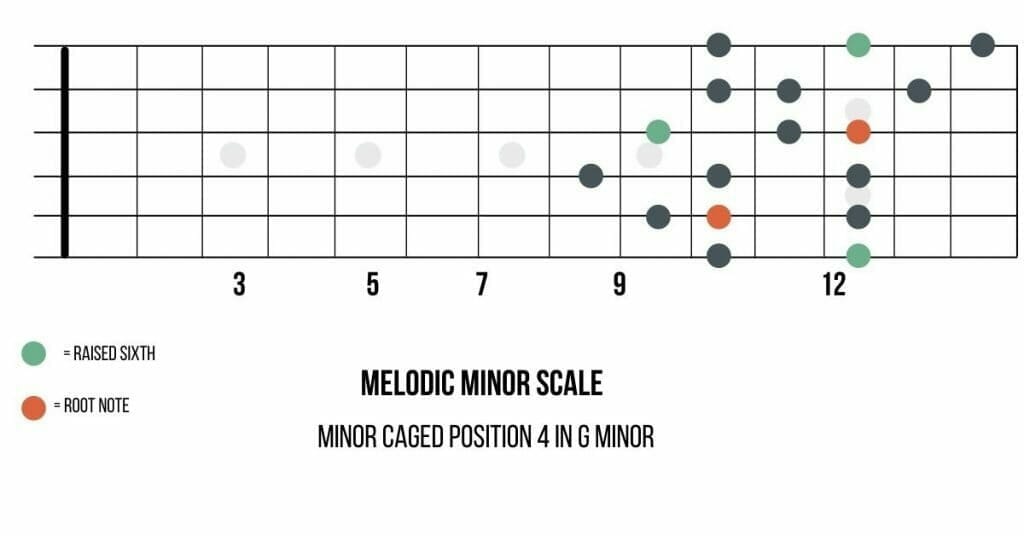
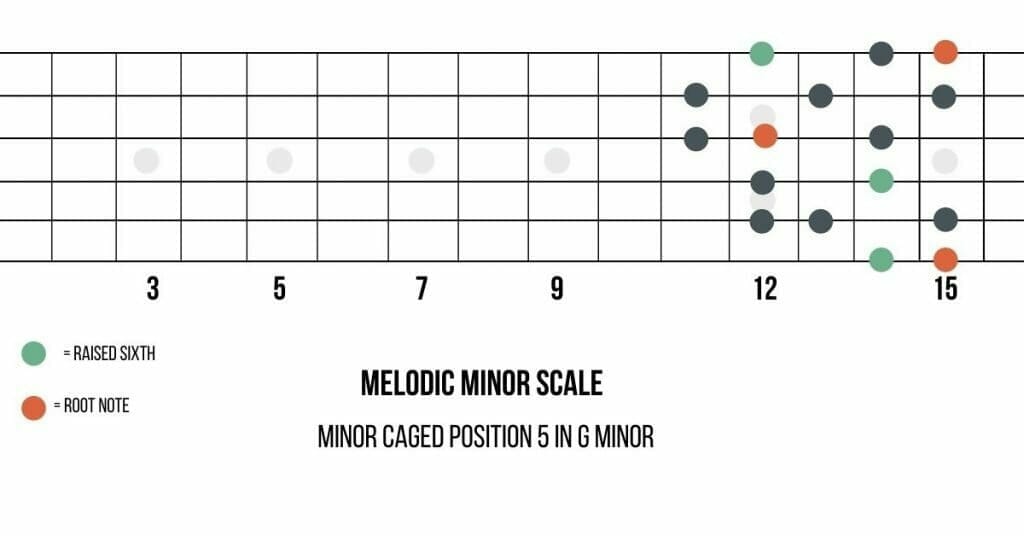
What Notes Are in Aeolian (Natural Minor Scale)?
Disclaimer: I will be combining enharmonic scales (same notes/different names)
What Notes are in Harmonic Minor Scale?
Disclaimer: I will be combining enharmonic scales (same notes/different names)
| Scale | Relative Major | |
| C Harmonic Minor | C D Eb F G Ab B C | Eb Major |
| C#/Db Harmonic Minor (Enharmonic Scales) | C# D# E F# G# A B# C# Db Eb Fb Gb Ab Bbb C Db | E Major for C# for Harmonic Minor Fb Major for Db for Harmonic Minor |
| D Harmonic Minor | D E F G A Bb C# D | F Major |
| D#/Eb Harmonic Minor (Enharmonic Scales) | D# E# F# G# A# B C## D# Eb F Gb Ab Bb Cb D Eb | F# Major for D# for Harmonic Minor Gb Major for Eb for Harmonic Minor |
| E Harmonic Minor | E F# G A B C D# E | G Major |
| F Harmonic Minor | F G Ab Bb C Db E F | Ab Major |
| F#/Gb Harmonic Minor (Enharmonic Scales) | F# G# A B C# D E# F# Gb Ab Bbb Cb Db Ebb F Gb | A Major for F# Harmonic Minor Bbb Major for Gb Harmonic Minor |
| G Harmonic Minor | G A Bb C D Eb F# G | Bb Major |
| G#/Ab Harmonic Minor (Enharmonic Scales) | G# A# B C# D# E F## G# Ab Bb Cb Db Eb Fb G Ab | B Major for G# Harmonic Minor Cb Major for Ab Harmonic Minor |
| A Harmonic Minor | A B C D E F G# A | C Major |
| A#/Bb Harmonic Minor (Enharmonic Scales) | A# B# C# D# E# F# G## A# Bb C Db Eb F Gb A Bb | C# Major for A# for A# Harmonic Minor Db Major for Bb for Bb Harmonic Minor |
| B Harmonic Minor | B C# D E F# G A# B | D Major |
What Notes Are In Melodic Minor Scale?
Songs that Use the Aeolian Mode (Natural Minor Scale)
Gotye “Somebody That I Used to Know”
Adele “Hello”
Elliott Smith “Everything Means Nothing to Me”
Songs that Use the Harmonic Minor Scale
Billie Eilish “Bad Guy”
Radiohead “2+2 = 5”
Songs that use the Melodic Minor Scale
Carol of Bells
What to Do Next
The Minor Scales are a great way to bring a foreboding, moody, and sentimental tone to your music.
Understanding how to use all three minor scales in your songwriting will improve your skills tremendously and help create more interesting melodies and harmony.
Experiment with the different scales and modes with your next song. If you struggle with the songwriting process, I’ve created a great article, “How to Write a Song in 5 Simple Steps” for you to check out now!
Happy Songwriting!

